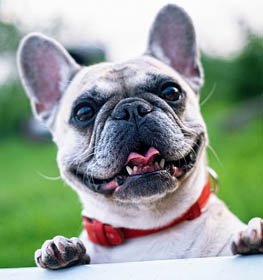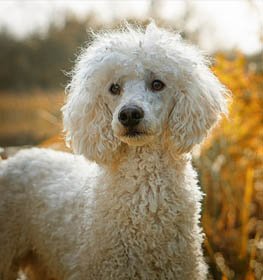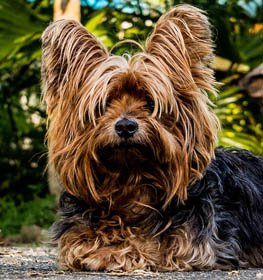Tibetan Terrier Information & Dog Breed Facts
Collection of all the general dog breed info about Tibetan Terrier so you can get to know the breed more.
| Group | Companion Dogs |
|---|---|
| Popularity Rank | 101 |
| Reviews | 4 |
| User Ratings | |
|
Compare the Tibetan Terrier With Other Dogs
Select at least one dog breed to make the comparsion. | |
 | |
| Origin | |
|
Common Names & Aliases
What other names is a Tibetan Terrier known by? Discover all traditional, regional and informal names used for this breed. | Dokhi ApsoTsang Apso |
|---|---|
|
Breed Classification
What type of dog breed is a Tibetan Terrier? Learn about its genetic classification and breeding category. | Purebred |
Photo Gallery of the Tibetan Terrier Breed
|
Size Classification
What size category is a Tibetan Terrier? Learn how big the Tibetan Terrier breed typically grows. | Medium |
|---|---|
|
Weight Statistics
How much does a Tibetan Terrier weigh? Discover typical weight ranges for adult males and females of the Tibetan Terrier breed. | 18-30 pounds (8.2-13.6 kg) |
|
Average Weight
What is the average weight of a Tibetan Terrier? | 24 pounds (8.2-13.6 kg) |
|
Height
How tall is the Tibetan Terrier? Tibetan Terrier height: | 14-17 inches (36-43 cm) |
|
Average Height
What is the average height of a Tibetan Terrier? | 15.5 inches (39.5 cm) |
|
Price Range
How much does a Tibetan Terrier puppy cost? Find current market prices and factors affecting Tibetan Terrier costs. | $1200-$2000 If you choose to purchase the Tibetan Terrier, you should know that the mentioned amount of money is an average of the collected data from breeders’ sites and puppy finder places. If you have a Tibetan Terrier for sale, please advertise it on a reliable website to make sure the Tibetan Terrier gets to a happy place. |
|---|---|
|
Availability
How easy is it to get a Tibetan Terrier? How many Tibetan Terrier are there in the world? | Frequent: The Tibetan Terrier is easier than average to get. Maybe there is some risk of overbreeding, as it is a popular breed. Due to its popularity, inbreeding may occur. A new study shows that inbreeding contributes to the incidence of disease and health problems. So be careful and seek the help of an experienced person or a professional, in making your decision. |
|
Intelligence Rating
How intelligent is a Tibetan Terrier? Discover the Tibetan Terrier's intelligence ranking and learning capabilities. | Low to average: This canine intelligence is not the brightest one. Keep in mind that if you want to teach them any tricks, they understand and memorize new commands in 40-80 repetitions. Tibetan Terrier obey the first command 30% of the time or better. So if you want to have a smart dog, you might have to reconsider your choice with this breed.
The Tibetan Terrier ranks below average in the intelligence ranking of dogs. |
|---|---|
|
Training Difficulty
How easy is it to train a Tibetan Terrier? Learn about the Tibetan Terrier's trainability and response to training methods. | Tibetan Terrier dogs are quite easy to train. Sometimes they can be challenging, but if you're consistent in teaching new commands they will obey for sure. |
|
Watchdog Rating
How good is a Tibetan Terrier as a watchdog? Learn about the Tibetan Terrier's alertness and guarding instincts. | Tibetan Terrier dogs are average watchdogs. If they sense something different, they will alert you, but observation isn't considered their main job.
|
|
Territorial Protection
Is a Tibetan Terrier protective of its territory? Learn about the Tibetan Terrier's guarding instincts and behavior. | Tibetan Terrier dogs are average defenders. Some dogs are very protective of their territory, while others easily let a stranger to trespass. This breed is not sure to defend its territory in every situation. |
|
Personality Traits
What personality does a Tibetan Terrier have? Learn about characteristic Tibetan Terrier temperament and behavior traits. | EnergeticSensitiveIntelligentAffectionateGentleReservedAmiable |
|---|---|
|
Sensitivity Level
How sensitive are they? Tibetan Terrier sensitivity: | They are a little bit more sensitive than other dog breeds. Soft punishment affects them emotionally. Tibetan Terrier dogs don't tolerate irregular daily routines, noisy households, and frequent guest visits really well.
They are receptive to their owner's emotions and make wonderful family companions. |
|
Affection Level
How affectionate are they? Is a Tibetan Terrier a good family dog? | High: Tibetan Terrier dogs are genuinely loyal, soft and gentle, loving, and affectionate dogs toward their handlers. They enjoy quality time with their owners despite the activity and are considered great therapy dogs for those in need. This breed responds strongly to their handler's emotions because they bond closely. Their happiness is your happiness. |
|
Social Needs
How much social interaction does the Dokhi Apso need? Tibetan Terrier social needs: | Tibetan Terrier dogs are a social breed. They enjoy being around people or other animals. This breed doesn't tolerate being left alone. |
|
Impulse to Wander or Roam
How likely is the Tibetan Terrier to run away? Does this breed explore or wander a lot? Does Tibetan Terrier roam? | Tibetan Terrier dogs have average wanderlust potential. Sometimes they like to explore the world and they might escape once or twice, but usually, they prefer staying safely at home. Safer to teach them how to get back to you on command. |
|
Prey Drive
Do this canine have a strong prey drive? Does Tibetan Terrier have high prey drive? | Tibetan Terrier dogs have low to an average impulse to chase and catch something like a cat or any other small aminals. |
|
Barking Frequency
Does a Tibetan Terrier bark a lot? Learn about typical Tibetan Terrier vocalization patterns and triggers. | Low to Average: The Tibetan Terrier rarely barks. This breed could be a good choice if you're looking for a quiet breed. They don't bark unless there is a good reason.
Top reasons for barking: protection, alarm, fear, boredom, attention-seeking, greeting, separation anxiety, compulsive barking. |
|---|---|
|
Playful Nature
How playful is a Tibetan Terrier? Understand the typical play drive and energy level of the Tibetan Terrier breed. | The Tibetan Terrier is a playful breed. Excited barking and sometimes nipping will alert you to play. |
|
Apartment Adaptability
Can a Tibetan Terrier live in an apartment? Learn about the Tibetan Terrier's suitability for apartment living. | Very house-friendly dog the Tibetan Terrier breed. It's good if you have a small garden where he can go out and do his business, but it's not important at all. You can get enough exercise with one or two walks a day, so keeping them indoors shouldn't be a problem. |
|
Lifestyle Adaptability
How adaptable is a Tibetan Terrier to lifestyle changes? Learn about the Tibetan Terrier's flexibility to new situations. | Tibetan Terrier dogs adapt very well to lifestyle changes and basically all living environments. They don't mind moving from one place to another with their owner. |
|---|---|
|
Alone Time Tolerance
Can a Tibetan Terrier be left alone? Learn about the Tibetan Terrier's tolerance to solitude. | Tibetan Terrier dogs do best when a family member is at home during the day or if their workplace is dog-friendly so they can take the dog at work. |
|
Bite Risk Assessment
What is a Tibetan Terrier biting potential? Learn about the Tibetan Terrier's bite risk factors. | Low 🔽 The Tibetan Terrier has a low chance of biting somebody. Top reasons for dog bite: protection, pain, excitement, herding instinct, being provoked. (Data based on the available online bite statistics.) |
|---|---|
|
Mouthing Tendency
Is a Tibetan Terrier mouthy? Learn about the Tibetan Terrier's tendency to use mouth during play. | Tibetan Terrier dogs have a lower than average tendency to nip, chew, playbite, or herd people. It's a common habit during puppyhood, not aggressive behavior. These "bites" don't hurt, but Tibetan Terrier dogs need to be taught a good attitude. |
|
Bite Strength Rating
How strong is a Tibetan Terrier bite? Learn about the Tibetan Terrier's bite force measured in PSI. | Between 200 and 400 PSI ⏺ Tibetan Terrier bite force: Ordinary. Bite force Tibetan Terrier measurements typically fall within the range of 200 to 400 PSI. The bite force of a Tibetan Terrier is considered ordinary when compared to other dog breeds, but it is still quite powerful. This Tibetan Terrier bite force PSI can cause bite wounds. Tibetan Terrier bite PSI is not something that should be feared if the dog is well-trained and managed. To avoid any issues, it's essential to learn how to train a Tibetan Terrier puppy not to bite from an early age.
The Tibetan Terrier, and many others, have a fearsome presence because they have significant jaw strength, so it is important not to anger the dog and have it around strangers until it is fully trained. However, they are usually quite calm and good companions, they work well in families and are easy to care for. In conclusion, while the Tibetan Terrier bite force is certainly an interesting aspect of the breed, it is important not to let it overshadow the many other reasons why these dogs are so loved and respected. With proper training and socialization, a Tibetan Terrier can be a loyal and protective companion for your family. |
|
Average Lifespan
How long does a Tibetan Terrier live? Learn about the typical lifespan of the Tibetan Terrier breed. | 11-15 years The average lifespan of Tibetan Terrier: 13 years |
|---|---|
|
Climate Tolerance
How well does a Tibetan Terrier handle different weather? Learn about the Tibetan Terrier's climate adaptability. | Prefers average to cold weather conditions The Tibetan Terrier can adapt to well to cold weather conditions, some dogs even can be a good mountain dog. |
|
Health Concerns
What health issues are common in a Tibetan Terrier? Discover typical conditions affecting the Tibetan Terrier breed. | The Tibetan Terrier is a healthy breed, but there are certain health issues that you should check with your vet regularly. |
|
Vet Care Frequency
How often does a Tibetan Terrier need vet visits? Learn about the Tibetan Terrier's veterinary care requirements. | Average The Tibetan Terrier should have a complete physical check-up at least once per year. If your dog shows any symptoms, call your veterinarian. |
|
Health Problems
What genetic/health problems does the Tibetan Terrier breed have? What are the health issues and concerns of the Tibetan Terrier breed? Most common health risks of Tibetan Terrier: | Cataracts Hip Dysplasia Patellar LuxationProgressive retinal atrophy (PRA)HyperthyroidismDistichiasisLens Luxation |
|
Energy Rating
How energetic is a Tibetan Terrier? Understand daily activity needs of the Tibetan Terrier breed. | Tibetan Terrier dogs are high-energy dogs. An active lifestyle makes them happy. |
|---|---|
|
Activity Requirement / Exercise Need
How much exercise does a Tibetan Terrier need? How much exercise do Tibetan Terrier dogs require per day?
Do Tibetan Terrier dogs need a lot of exercises? | Tibetan Terrier dogs need quite a lot of exercise. Daily walks should be on schedule. If you live an active life, this breed can be a good choice for you. |
|
Sleeping Need
How much sleep does the Tibetan Terrier breed need? | Tibetan Terrier dogs don't need too much sleep. They are energetic and desire to live active life. If you think naps are overrated, this breed can be the best choice for you. |
|
Obesity Tendency
Is a Tibetan Terrier prone to weight gain? Learn about the Tibetan Terrier's obesity risks. | Average: The Tibetan Terrier has an average risk for obesity. Daily walks should be on schedule. To make your dog happy and fit, feed him with quality dry dog food and live an active life together. Try to find the happy medium between exercise and feeding.
If you notice any weight gain, consult your veterinarian and make a diet plan. Reduce unhealthy food and snacks, and measure the Tibetan Terrier weight regularly. |
|---|---|
|
Food Consumption
How much food does a Tibetan Terrier need daily? Learn about the Tibetan Terrier's feeding requirements. | Recommended daily amount: 1 1/8 to 1 3/8 cups of a high-quality dog food daily, divided into two meals. |
|
Allergy Friendliness
Is a Tibetan Terrier hypoallergenic? Learn about the Tibetan Terrier's suitability for allergy sufferers. | Yes Tibetan Terrier dogs do well with allergy sufferers by causing fewer allergic reaction. However there are no 100% hypoallergenic dogs in the world, there are a variety of breeds that are considered to reduce or minimize the possibility of an allergic response. Coat type isn't necessarily relevant, because most people are allergic to dander (flakes on the dog's skin) or saliva, not actually to dog hair. |
|---|---|
|
Coat Colors
What colors does a Tibetan Terrier come in? Discover all possible Tibetan Terrier color variations. | BlackGray White Silver |
|
Grooming Requirements
How much grooming does a Tibetan Terrier need? Learn about Tibetan Terrier coat maintenance requirements. | Professional: This breed needs a lot of work to keep in good condition. The Tibetan Terrier requires grooming on a daily basis.
Cutting the dog's hair by a professional groomer is essential. Everyday brushing of the dog's coat is necessary to reduce shedding. Ears and eyes should be cleaned regularly to avoid infections. Don't skip the seasonal flea treatment too. Dog nail trimming and dog bath should be on a weekly schedule. Taking good care of your Tibetan Terrier is time-consuming and requires excellent grooming skills. If you don't have the time and skill search for the best dog groomer or clipping service in your area and book an appointment. Maybe you're lucky to have a dog boarding service that includes grooming or walk-in dog bath places nearby. |
|
Drooling Tendency
Does a Tibetan Terrier drool a lot? Learn about the Tibetan Terrier's drooling habits. | The Tibetan Terrier is a perfect example of a very low drooling tendency. If you're disgusted by slobber spots on your clothes, the Tibetan Terrier could be a perfect choice for you. Drooling is the unintentional saliva flowing outside of the mouth. It can be completely normal or a sign of a health problem. Certain dog breeds drool minimum compared to others, just like the Tibetan Terrier.
If you notice any change in your dog's drooling habit, you should contact a vet as soon as possible. |
|
Stinkiness Rating
Does a Tibetan Terrier smell bad? Learn about the Tibetan Terrier's natural odor levels. | Medium ⏺ The Tibetan Terrier has an average chance of bad smell. Top reasons for dog stinkiness: infection of bad tooth/ear/skin folds, gas attacks. |
|
Coat Characteristics
What type of coat does a Tibetan Terrier have? Learn about the Tibetan Terrier's fur characteristics. | ThickSmooth |
|
Bathing Needs
How often does a Tibetan Terrier need baths? Learn about the Tibetan Terrier's bathing requirements. | 6-8 weeks Rarely. Bathing your dog is beneficial to them in more ways than just one. It’s also a good time to look for unusual scratches, bumps, fleas, and other irregularities. When their hair is wet and flat against their body, these details are more visible.
For example, short-haired dog breeds can go a very long time in between baths. These short-haired breeds shed regularly and that shedding works to naturally remove excess dirt and oil. So unless your weenie dog got into the garbage can, you can probably hold off on a bath for a while. |
|
Shedding Level
How much do Tibetan Terrier dogs shed? How to control, reduce and prevent the shedding of the Dokhi Apso? Do Tibetan Terrier dogs shed a lot? | Tibetan Terrier dogs shed none to minimal. Having a puppy from this breed you don't have to be afraid of your couch or car being covered by dog hair. Tibetan Terrier dogs could be the best choice if you don't tolerate dog hair. |
|
Child Compatibility
Is a Tibetan Terrier good with children? Learn about the Tibetan Terrier's behavior around kids of different ages. | Tibetan Terrier dogs are average friendly dogs towards children. |
|---|---|
|
Pet Compatibility
How well does a Tibetan Terrier get along with other pets? Discover the Tibetan Terrier's compatibility with other animals. | Tibetan Terrier dogs are generally with other pets. |
|
Stranger Friendly
Are they aggressive or friendly towards/with strangers? Tibetan Terrier temperament with other people: | Tibetan Terrier dogs are average friendly towards strangers. |
|
Cat Friendly
How well do Tibetan Terrier dogs get along with cats? Are they good with kittens? What is this fido's temperament with cats? Can they be good with cats? Can the Tibetan Terrier breed live with a cat? | Tibetan Terrier dogs are average friendly towards cats. |
|
Dog Friendly
Is Tibetan Terrier good with other dogs? Are they dog-friendly dogs? How well do Tibetan Terrier dogs get along with other dogs? | Tibetan Terrier dogs are average friendly towards other dogs. |
|
Good For First Time Owners
Is Tibetan Terrier breed good for first-time owners? Do they make a good dog for novice owners? Is Tibetan Terrier breed suitable for first-time owners? | Yes Tibetan Terrier dogs are good for novice owners, due to their easy-going personality. |
|
Office Friendly
Are Tibetan Terrier dogs good office canines? Do Tibetan Terrier dogs make good office-friendly pets? Can they be office dogs? | No Tibetan Terrier is not the best dog breed for office environment. |
|
Senior Citizens Friendly
Are they senior citizens friendly dogs? How well do Tibetan Terrier dogs get along with the elderly people? What is the Dokhi Apso temperament with senior people? Are Tibetan Terrier dogs good for elderly owners? | Tibetan Terriers are commonly okay with elderly people. |
|
Service Dog Capability
Can a Tibetan Terrier be a service dog? Learn about the Tibetan Terrier's service work potential. | Not really This breed generally not used as a service dog. A service dog is a term used in the USA to refer to any type of assistance dog specifically trained to help people who have disabilities, such as visual impairment, hearing impairments, mental disorders, seizures, mobility impairment, and diabetes. Service dogs are protected under the ADA (Americans with Disabilities Act).
Tibetan Terrier is not the best breed for service purposes. |
|---|---|
|
Therapy Work Suitability
Is a Tibetan Terrier good as a therapy dog? Learn about the Tibetan Terrier's therapy work aptitude. | Not really This breed is generally not used as a therapy dog. A therapy dog is a dog that might be trained to provide affection, comfort, and love to people in hospitals, retirement homes, nursing homes, schools, hospices, disaster areas, and people with anxiety disorders or autism.
Tibetan Terrier is not the best breed for therapeutic purposes. |
|
Scent Detection Ability
Is a Tibetan Terrier good at detection work? Learn about the Tibetan Terrier's scenting abilities. | Not really They are not typically employed for this type of work, but there may be exceptional cases. A detection dog or sniffer dog is a dog that is trained to use its senses (mostly its smell) to detect substances such as explosives, illegal drugs, wildlife scat, currency, blood, and contraband electronics such as illicit mobile phones.
Tibetan Terrier is not the best breed for detection purposes. |
|
Search & Rescue Potential
Can a Tibetan Terrier do search and rescue? Learn about the Tibetan Terrier's SAR capabilities. | Not really This dog breed is not typically used as a search and rescue dog. The use of dogs in search and rescue (SAR) is a valuable component in wilderness tracking, natural disasters, mass casualty events, and locating missing people.
The Tibetan Terrier is not the best breed for SAR purposes. |
|
Maritime Work Ability
Is a Tibetan Terrier good on boats? Learn about the Tibetan Terrier's maritime capabilities. | Not really Tibetan Terrier breed usually doesn't like being on a boat. Boat dogs were typically bred for their strength, stamina, and water resistance, as they were often required to perform tasks such as pulling in fishing nets, and jumping into the water to retrieve ropes or lines, or helping to move cargo. Sailor dog is a type of dog that was bred to accompany sailors on their voyages. They were typically used for three purposes: as a working dog, a watchdog, and as a companion. A boat dog is a term used to describe a type of dog that was traditionally bred and used as a working dog on boats. |
|
Draft Work Capability
Can a Tibetan Terrier pull carts? Learn about the Tibetan Terrier's drafting abilities. | Not really A drafting dog or draft dog is a dog bred and used for cart pulling. Dogs bred for this work have strong builds and qualities that are needed, strength and determination.
Tibetan Terrier is not the best breed for drafting purposes. |
|
Military Service Background
Was a Tibetan Terrier used in military service? Learn about the Tibetan Terrier's military history. | Not really In history, this breed was not really used for combat dog. |
|
Puppy Litter Size
How many puppies does a Tibetan Terrier usually have? Learn about typical litter sizes. | 4-6 puppies |
|---|---|
|
Pregnancy Duration
How long is a Tibetan Terrier pregnant? Learn about the Tibetan Terrier's gestation period. | 60-64 days Reproductive cycle of the female Tibetan Terrier: The first period called Proestrus lasts for about 9 days.
During this time the females start to attract males. You can notice by swelling vulva and bloody discharge. The second part is the Estrus when the female is receptive for the male. It lasts for about 3 to 11 days. The sign of the proestrus part is the soft and enlarged vulva. The discharge decreases and lightens in color. The third part is the Diestrus. Normally, it occurs around day 14. In this period the female’s discharge changes for vivid red and coming to its end. The vulva returns to average, and she will no longer permit mating. The fourth part called the Anestrus. The time frame between heat periods normally lasts about six months. |
|
Breeding Frequency
How often can a Tibetan Terrier have puppies? Learn about safe breeding intervals. | Once a year. More frequent breeding is not healthy. It is very important not to buy a dog from a puppy mill, where the needs of the pups and their mothers are ignored. It's an inhumane high-volume dog breeding facility, where puppies born several times a year. |
|
AKC Classification
What AKC group is a Tibetan Terrier in? Learn about the Tibetan Terrier's AKC classification. | Recognized by the American Kennel Club in 1973 as a Non-Sporting breed. |
|---|---|
|
FCI Classification
What FCI group is a Tibetan Terrier in? Learn about the Tibetan Terrier's international classification. | Recognized by FCI in the Companion and Toy Dogs group, in the Tibetan breeds section. |
|
Kennel Club Recognition
Which kennel clubs recognize a Tibetan Terrier? Learn about the Tibetan Terrier's official recognition. | American Canine RegistryAmerican Kennel ClubAmerica's Pet RegistryCanadian Kennel ClubDog Registry of America Inc.Federation Cynologique InternationaleKennel Club of Great BritainNorth American Purebred Registry, Inc.American Canine Association, Inc.Australian National Kennel CouncilContinental Kennel ClubNational Kennel ClubNew Zealand Kennel Club |
Tibetan Terrier Pros and Cons
- Allergy Friendliness: Tibetan Terrier dogs do well with allergy sufferers by causing fewer allergic reaction.
- Apartment Adaptability: Very house-friendly dog the Tibetan Terrier breed.
- Shedding Level: Tibetan Terrier dogs shed none to minimal.
- Drooling Tendency: The Tibetan Terrier is a perfect example of a very low drooling tendency.
- Mouthing Tendency: Tibetan Terrier dogs have a lower than average tendency to nip, chew, playbite, or herd people.
- Lifestyle Adaptability: Tibetan Terrier dogs adapt very well to lifestyle changes and basically all living environments.
- Good For First Time Owners: Tibetan Terrier dogs are good for novice owners, due to their easy-going personality.
- Intelligence Rating: Low to average: This canine intelligence is not the brightest one.
- Grooming Requirements: Professional: This breed needs a lot of work to keep in good condition.
- Alone Time Tolerance: Tibetan Terrier dogs do best when a family member is at home during the day or if their workplace is dog-friendly so they can take the dog at work.
- Office Friendly: Tibetan Terrier is not the best dog breed for office environment.
Tibetan Terrier History
The Tibetan Terrier, also known as the Dhokhi Apso or Tsang Apso, originated in Tibet to aid shepherds. However, the breed’s origins are unknown before it appeared in Tibet. Although there are many stories and theories out there about the breed’s origin. For example, some believe that the breed is a descendent of a dog that traveled with the Cuman people, a Turkic-speaking people that originated in western China near Tibet but fled invading the Mongols. Others think that the breed comes from the “Lost Valley” which became isolated as the result of a violent earthquake at the beginning of the 14th century. Heads of monasteries who visited the valley before the disaster took place were given a Tibetan Terrier as a good luck token that would carry peace and prosperity to their monasteries.
Furthermore, its Tibetan name, Tsang Apso mentioned above, actually translates to “shaggy or bearded dog”, but for at least 2000 years the monks who owned and lived with Tibetan Terriers also referred to them as “the little people”. The breed was so valued by the people around them, they were considered more than just companions. They were also working dogs that herded, protected, altered, and even retrieved items that fell off monastery walls or mountainsides. They were also known as “Holy Dogs” and were never sold, but presented to visiting lamas only. The breed evolved over many centuries for sure, surviving in Tibet’s extreme climate and difficult terrain, developing a protective double coat, compact size, unique foot structure, and great agility.
Moreover, the Tibetan Terrier was introduced in the West back in the 1930s by a British surgeon, called Dr. Agnes Greig who was working in Tibet. She was given a female Tibetan Terrier puppy after she operated Tibetan woman who had an ovarian cyst. The puppy was given as a token of gratitude by the woman and her family. Dr. Greig named the puppy Bunti and eventually, she became so fascinated with the Tibetan Terrier, that she obtained more dogs and managed to get the breed recognized by the Kennel Club of India, which changed the breed’s name from “Lhasa Terrier” to Tibetan Terrier. According to experts sources differ on when exactly Dr. Greig returned to England, but she brought her dogs home with her and together with her mother, who was already an established dog breeder, started to breed Tibetan Terriers. The British Kennel Clun followed the lead of the Indian Kennel Club and in February 1931, the first registration of Tibetan Terriers appeared in the Kennel Gazette Breed Records. The Tibetan Breeds Association was formed in England and efforts were made to encourage breeding within a fixed standard of points. Dr. Greig established the world-famous Lamleh Kennels in England where she bred Tibetan terriers until her death in 1972. Although Dr. Greig was instrumental in getting the Kennel Club to recognize the breed, she was vehemently opposed to ‘glamorizing’ a breed she considered to be a working dog with a short rugged coat. A Tibetan Terrier Club in the UK was also formed in 1956. In the same year, Dr. and Mrs. Murphy of Great Falls, Virginia imported the first “official” Tibetan Terrier into the United States from England. The following year a mate was imported and the Kalai Kennels was established. Mrs. Murphy continued to breed her Tibetans at Kalai until her death in 1976. During the last twenty years of her life, she worked tirelessly to promote the breed in the United States and Canada. She and her husband founded the Tibetan Terrier Club of America, which was established in 1957. The TTCA acted as a registered organization for Tibetan Terriers until the breed was recognized by the American Kennel Club, encouraged and promoted purebred Tibetan Terriers, and protected and advanced the interests of the breed in the USA.
Latest Tibetan Terrier Compares
Tibetan Terrier Names
How old is my Tibetan Terrier in human years?
You May Also Like
Rate The Tibetan Terrier Breed
Tibetan Terrier Comments, Reviews and Questions
- MS
Oct 19, 2020, 6:45:54 AM:
Lovely dogs, sa affectionate and loyal. Do not shed at all, very sensitive and a great companion. Loves children and other people, is obedient and playful! Highly recommend!
- CK
Aug 30, 2020, 6:41:38 PM:
Tibetan Terriers are the most loving, affection and loyal dogs. Not good watch dogs. They love people are extremely sensitive and don’t like to be left alone. They do not shed. The biggest con with this dog is grooming due to their double coat.
- Viv
Aug 5, 2020, 1:31:19 AM:
Tibetan Terriers are loving, loyal companion dogs. Mine doesn't leave my side
- tibetan terrier
Oct 30, 2019, 9:18:51 PM:



















